Introduction:
Cooking rice can be a daunting task, but fear not! In this guide, I will share my tried and tested methods for cooking rice perfectly, without the need for a rice cooker. Whether you prefer the stove, oven, or microwave, I’ve got you covered. Say goodbye to gluggy or mushy rice and hello to fluffy and tender grains every single time!
Three Ways to Cook Rice
Everyone should know how to cook rice flawlessly, even without a rice cooker. I will walk you through three different methods:
- Stove in a pot (13 min) – my personal favorite for the best results.
- Oven (35 min) – the most hands-off way, perfect for large batches.
- Microwave (12 min) – the fastest and easiest method.

Rice Types for This Recipe
You can use this recipe for cooking medium and long grain white rice, as well as sushi rice (short grain). However, please note that jasmine, basmati, and brown rice require separate instructions.
Use this recipe for:
- Long grain white rice
- Medium grain white rice
- Short grain white rice (except sushi rice)
See separate recipes for:
- Basmati rice
- Jasmine rice
- Brown rice
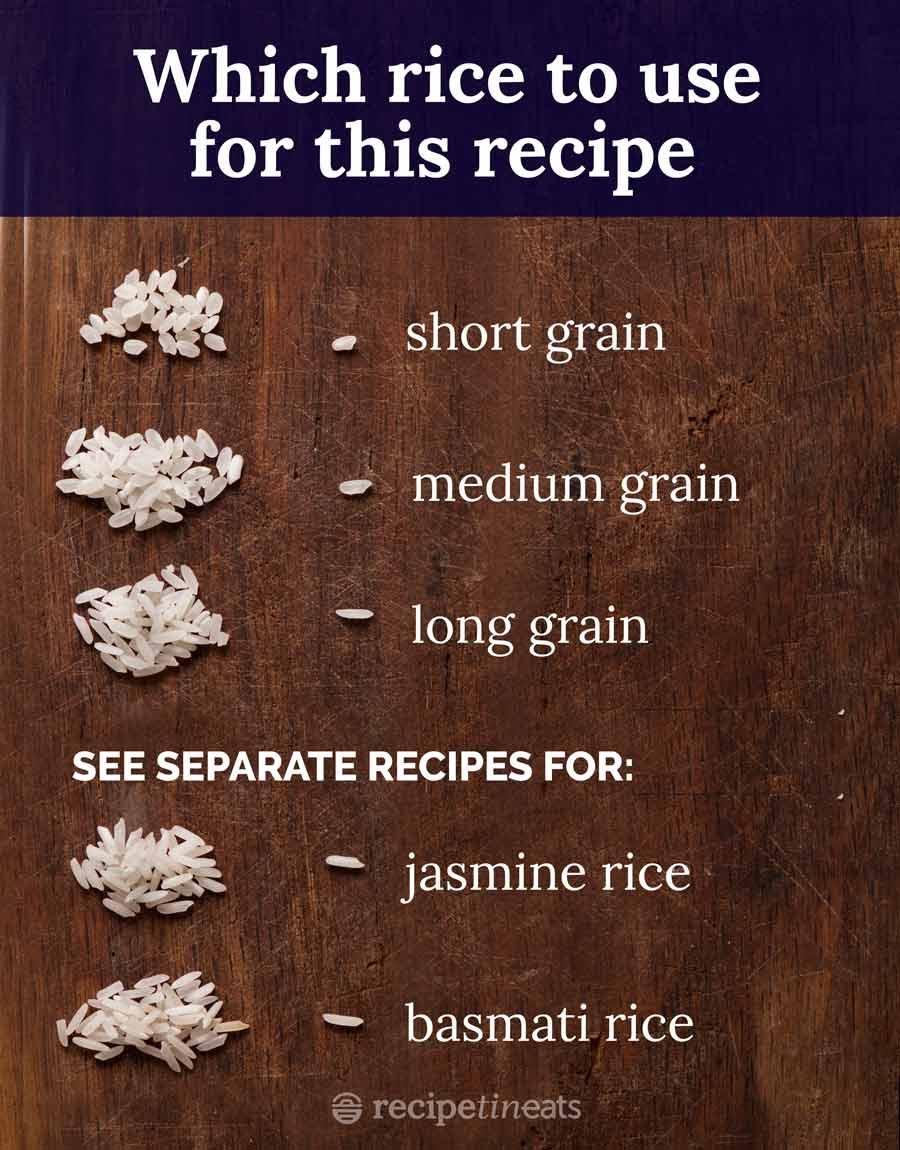
Wondering about Rice Types?
The length of rice grain determines its stickiness. Short grain rice is stickier and commonly used for sushi, while longer grains are less sticky. For instance, basmati rice is the least sticky, making it perfect for Indian cuisine. Embrace the stickiness as it makes eating with chopsticks easier!
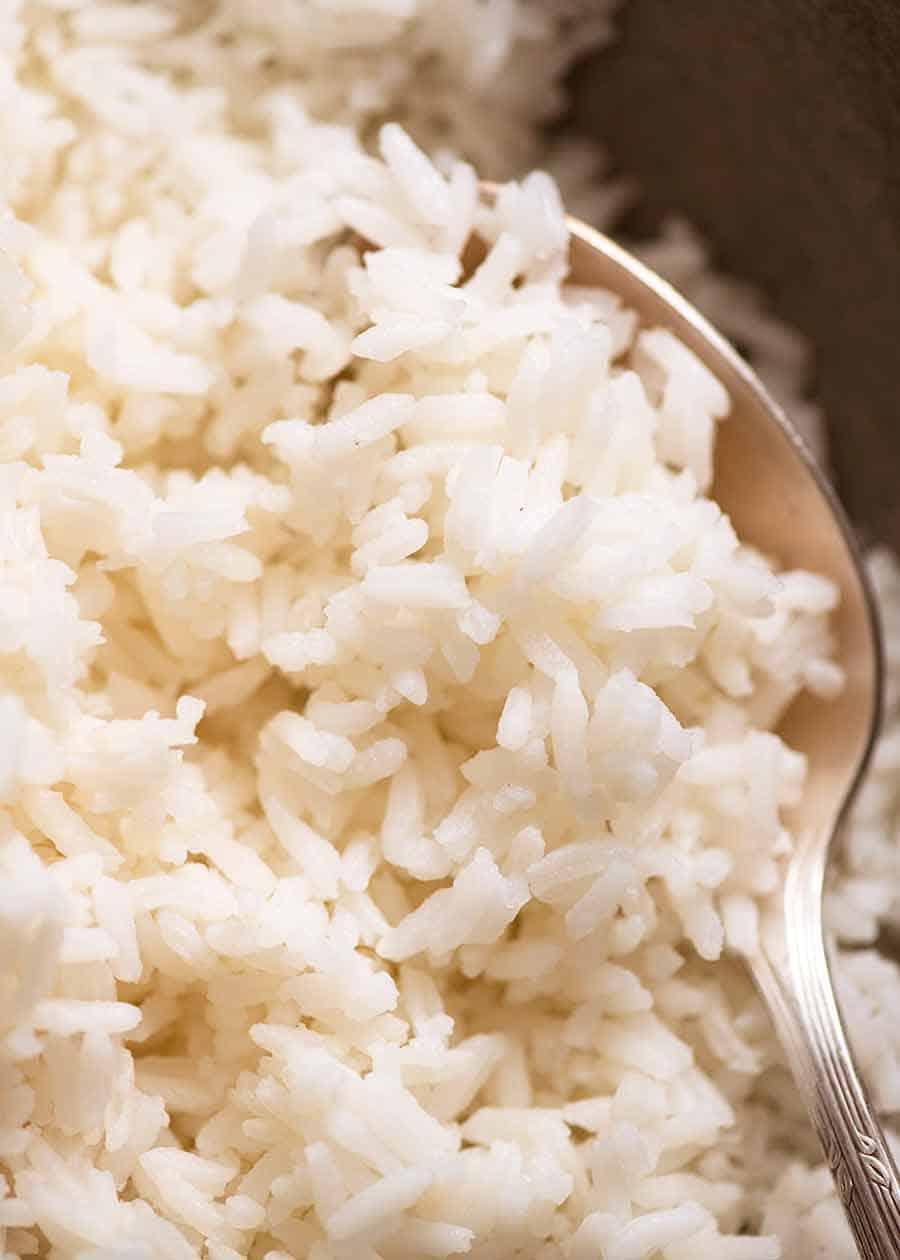
Rice to Water Ratio
To achieve perfectly cooked rice, it’s crucial to maintain the right rice to water ratio. For every 1 cup of rice, you will need 1.5 cups of water when cooking on the stove or in the oven. However, when using the microwave, increase the water to 2 cups.
If you rinse the rice, reduce the water by 2 tablespoons per cup of rice. But here’s the secret: you don’t need to rinse rice to achieve fluffy results if you follow my cooking method and ratio!

How to Cook Rice on the Stove (My Default Method)
Let me guide you through my go-to method for cooking rice on the stove:
- Place 1 cup of rice (no rinsing required!) and 1.5 cups of water in a saucepan.
- Bring it to a boil over medium-high heat, uncovered.
- Reduce heat to low, cover with a lid, and let it cook for 13 minutes.
- After cooking, let the rice stand in the covered saucepan for 10 minutes.
- Finally, fluff the rice using a rice paddle, rubber spatula, or fork, and behold your perfect fluffy rice!
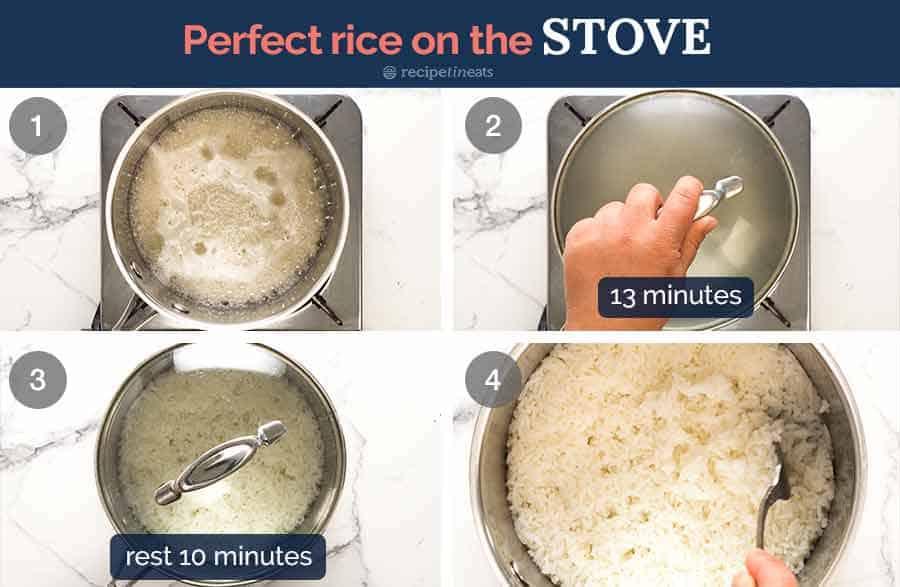
How to Cook Rice in the Oven
If you prefer a more hands-off approach and need to cook a big batch of rice, the oven method is perfect for you. Here’s how:
- Place the rice and boiling water in a small casserole dish with a lid (or use a pan covered with foil).
- Cover it and bake at 200°C/390°F (180°C fan) for 35 minutes.
- Remove from the oven and let it stand for 10 minutes.
- Fluff the rice with a fork and enjoy the perfectly cooked fluffy oven-baked rice!
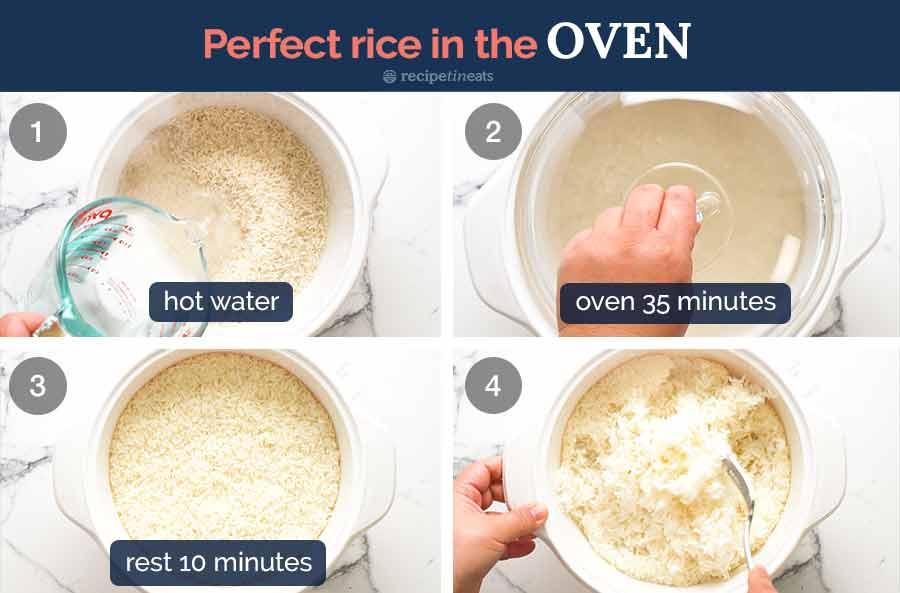
How to Cook Rice in the Microwave
For those emergency rice situations or when you need a quick fix, the microwave method is a lifesaver. Here’s what you need to do:
- Place 1 cup of rice and 2 cups of boiling water in a microwave-proof container that’s 3 to 4 times taller than the water level (as it bubbles up).
- Microwave uncovered for 12 minutes on high.
- Remove from the microwave, cover, and let it rest for 10 minutes.
- Fluff the rice and it’s ready to enjoy!
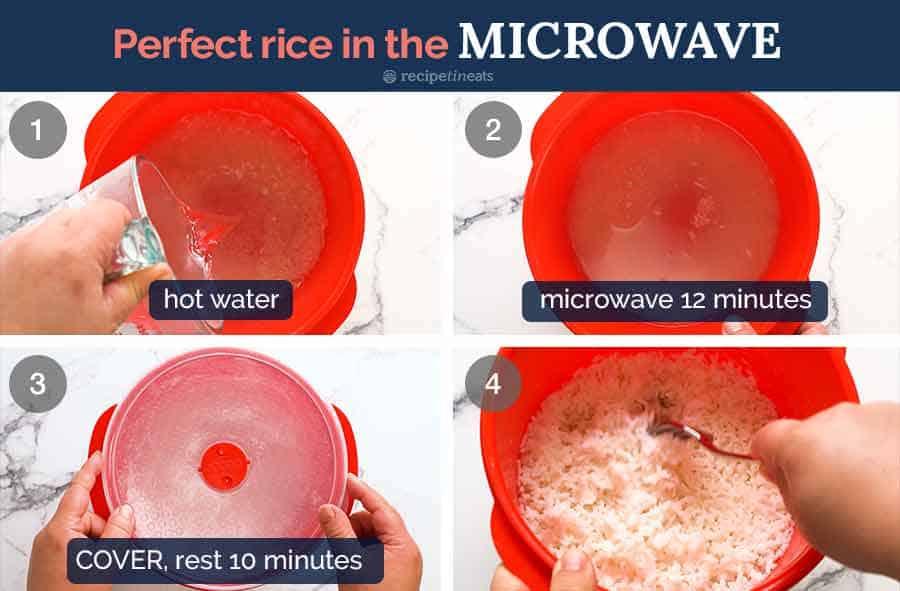
The Biggest Mistake You’ve Been Making All Your Life
One common mistake when cooking rice is using too much water. Most recipes call for 2 cups of water to 1 cup of rice, resulting in overly soft and gummy rice. This issue is further aggravated by rinsing the rice, which adds extra water weight.
The perfect rice-to-water ratio is 1:1.5 for the stove method. If you insist on rinsing the rice, reduce the water by 2 tablespoons. However, trust me when I say that there is no need to rinse rice to achieve fluffiness if you follow my method and ratio!
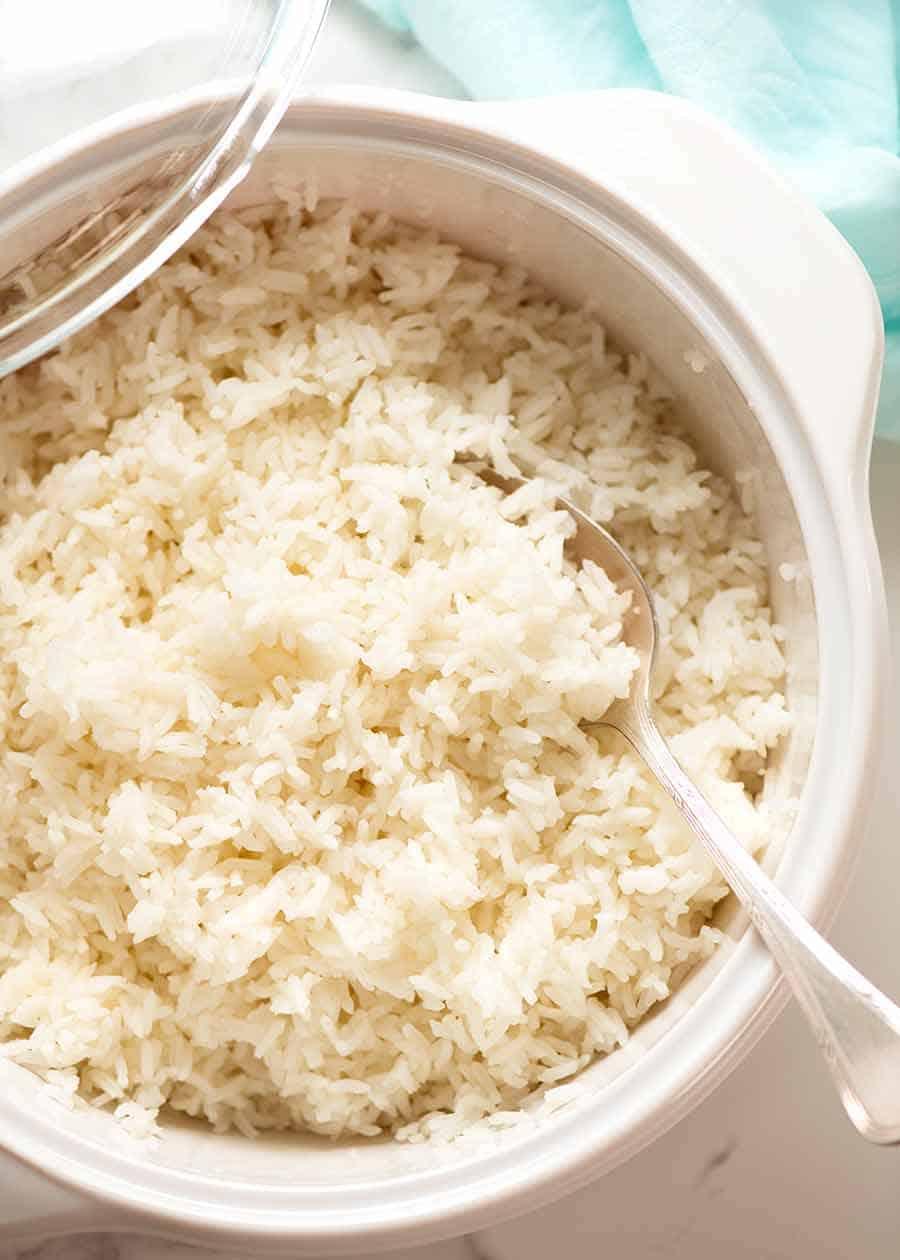
There Is No Need to Rinse Rice to Make It Fluffy!
Despite popular belief, rinsing rice is not necessary to achieve fluffy rice. By using my 1:1.5 rice-to-water ratio and following my cooking method, you can enjoy beautifully fluffy rice without rinsing. Rinsing is only required under specific circumstances:
- To clean it: If you bought rice from street markets or similar sources, washing the rice will remove impurities.
- Flavored rices: Some recipes call for rinsing when other ingredients create a thicker cooking liquid. For instance, Biryani or Coconut Rice may require rinsing or even parboiling.
If you do rinse the rice, remember to reduce the water by 2 tablespoons per cup of rice as the rinsed rice retains some water.

Troubleshooting Tips
Here are some common issues you might encounter while cooking rice and how to fix them:
- Scorched base: If the base of your pot is burnt, the heat might have been too high, or the pot might be too large for the amount of rice. Adjust accordingly.
- Water not absorbed: Ensure that you leave the rice on the stove until the liquid is fully absorbed. Tilt the saucepan to check. If it’s taking longer than usual, your stove might be weaker, in which case, extend the cooking time by 1-2 minutes.
- Rice not properly cooked: If your rice grains are unevenly cooked, check if you peeked while the rice was cooking or if you used an appropriate pot size. If needed, add extra water, cover, and cook for an additional 5 minutes on low heat.
- Rice too hard: If your rice turns out too firm, adjust the water amount. Start by adding an extra 2 tablespoons of water for your next batch, and gradually increase until it reaches your desired texture.
- Overflow mess: Ensure that your pot or microwave container is of the appropriate size and has a heavy lid to prevent overflow. Oven-baked rice doesn’t face this issue as it cooks more slowly.
- Cooking rice at high altitude: Adjust the cooking time by adding an extra minute for every 300m/1,000ft above sea level.
Useful Tips
Here are some additional tips to ensure your rice always turns out perfect:
- NO PEEKING, NO STIRRING! Avoid lifting the lid or stirring the rice while it’s cooking. This will disturb the cooking process, resulting in undercooked or gluey rice.
- NEVER skip resting for 10 minutes. This step allows the rice to finish cooking in the residual heat and ensures the full absorption of any remaining water.
- Don’t bring to a heavy boil. When cooking rice on the stove, bring it to a simmer or gentle boil instead of a rapid boil to prevent boiling over. Use medium-high heat until you see big, gentle bubbles forming on the surface.
- Don’t stress about measuring cups. You can use any measuring tool as long as you maintain the same rice-to-water ratio. A mug, bowl, can, or jug will work just fine.
- Rice storage and reheating: Cooked rice can be stored in an airtight container in the fridge for up to 4 days or frozen for 3-4 months. To reheat, place the rice in a bowl, drizzle with a bit of water, cover with cling wrap, and microwave on high for 1 minute.
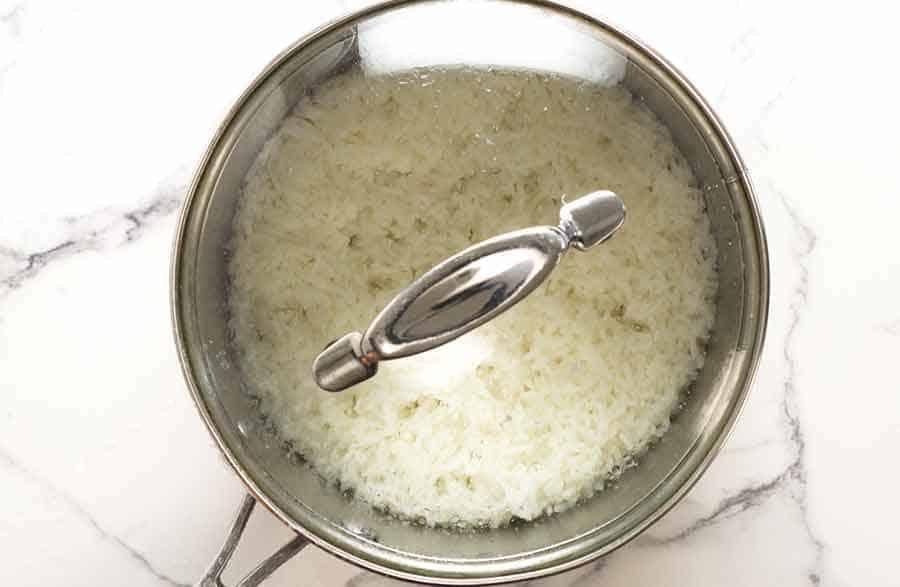
What to Serve with Rice
Now that you’ve mastered cooking rice, it’s time to explore the world of delicious pairings! Here are a few suggestions:
- Stir-fries
- Curries
- Chinese fried rice
- Nasi Goreng (Indonesian fried rice)
- Thai fried rice
- Chilli con carne
- Beef stroganoff
- Rice salads
- Bibimbap (Korean rice bowl)
In reality, rice pairs well with anything saucy, regardless of its cultural origin. The neutral flavor of rice complements a wide range of dishes!
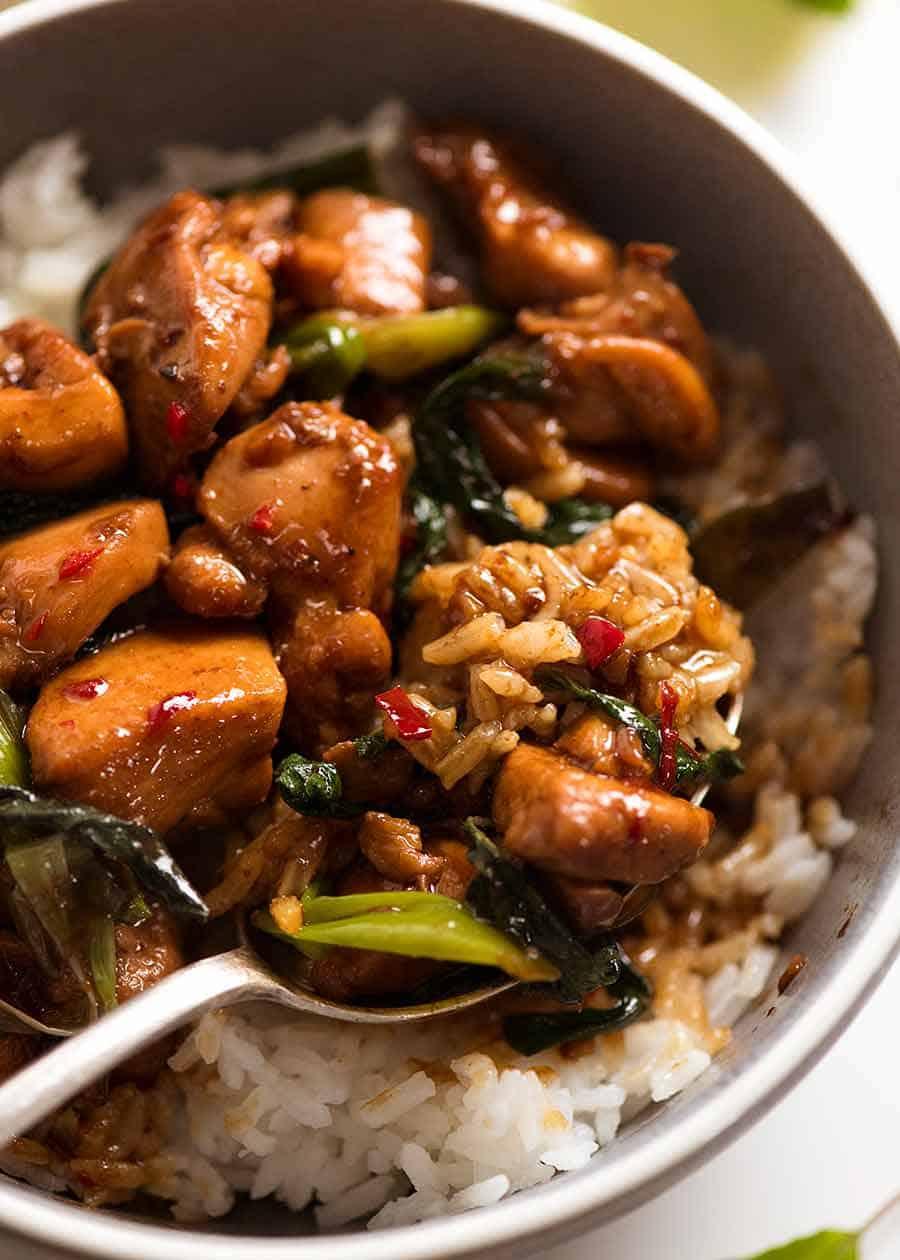
Congratulations – You’re Now a Rice Master!
Congratulations on reaching the end of this guide! By following these foolproof methods, you can now cook rice anytime, anywhere, without any special equipment. Get ready to explore a world of deliciousness, as you discover all the dishes you can create using your perfectly cooked rice. Enjoy the journey!
– Nagi x
Watch how to make it
Life of Dozer
Dozer, my furry friend, is currently obsessed with his devil toy. It suits his cheeky personality perfectly!




